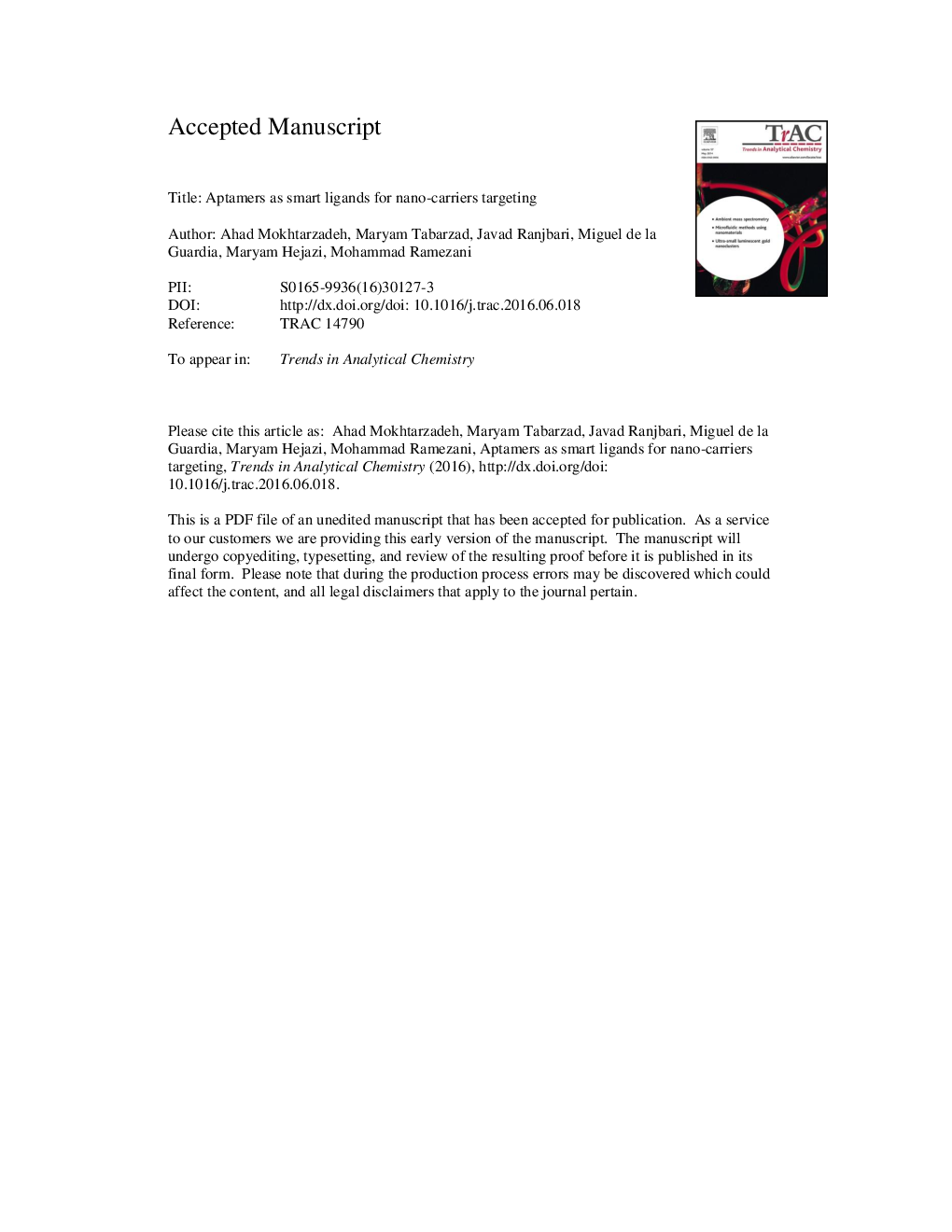| Article ID | Journal | Published Year | Pages | File Type |
|---|---|---|---|---|
| 7688427 | TrAC Trends in Analytical Chemistry | 2016 | 35 Pages |
Abstract
The development of enhanced drug delivery systems is one of the most attractive fields of pharmaceutical sciences, as some of the highly effective chemo/biotherapeutics for cancer treatment can not be administrated due to their high toxicities for normal cells or low stability in physiological media. However, drugs that are currently not administrable will become valuable if specific cell-targeted drug carriers can protect the normal cells from adverse effects and also improve drug pharmacokinetics. Aptamers are attractive and promising biomaterials developed with high affinity and specificity against numerous valuable targets. They could act similar to monoclonal antibodies (mAbs), and offer significant advantages. Combined with aptamers, nanostructures are smart veicles with remarkable properties for drug delivery. Combination of aptamer and nanotechnology has resulted in the production of various targeted drug delivery systems which are highly efficient in therapeutic and diagnostic applications. In this review, some of the efforts related to design and development of aptamer-targeted nanocarriers have been summarized considering: i) Aptamer importance as smart ligands and the aptamer development methods ii) Types of nanostructures combined with aptamers as targeting agent proposed in the literature iii) Cancer specific aptamers evaluated in combination with nanocarriers for diagnostic and therapeutic applications and iv) Discussion of aptamer-based smart nanocarriers according to the trend of related research works.
Keywords
MUCCNTSscFvshRNARGDSELEXmAbsPMSAPTXPEIBcl-xLTMBEpCAMHER-2SWCNTsPTK7FDAPLGAIL-6DOX225Ac3,3′,5,5′-tetramethylbenzidineNPsSmall interfering RNAmicro RNAsiRNAProstate specific membrane antigenAptamerMRIinterleukin-6EPRMagnetic resonance imagingsystematic evolution of ligands by exponential enrichmentcluster of differentiationDoxorubicinFood and Drug AdministrationCancer therapyVascular endothelial growth factorVascular Endothelial Growth Factor (VEGF)Infra-redAffinity ligandMucinepithelial cell adhesion moleculeMiRNANanoparticlesNano-carriersSingle-walled Carbon NanotubesCarbon nanotubesEnhanced permeability and retention effectquantum dotsTargetingPCRpolymerase chain reactionsMonoclonal antibodiesPaclitaxelProtein tyrosine kinase 7cytotoxic T-lymphocyte-associated protein 4polyethylene glycolPEGHuman epidermal growth factor receptor 2
Related Topics
Physical Sciences and Engineering
Chemistry
Analytical Chemistry
Authors
Ahad Mokhtarzadeh, Maryam Tabarzad, Javad Ranjbari, Miguel de la Guardia, Maryam Hejazi, Mohammad Ramezani,
